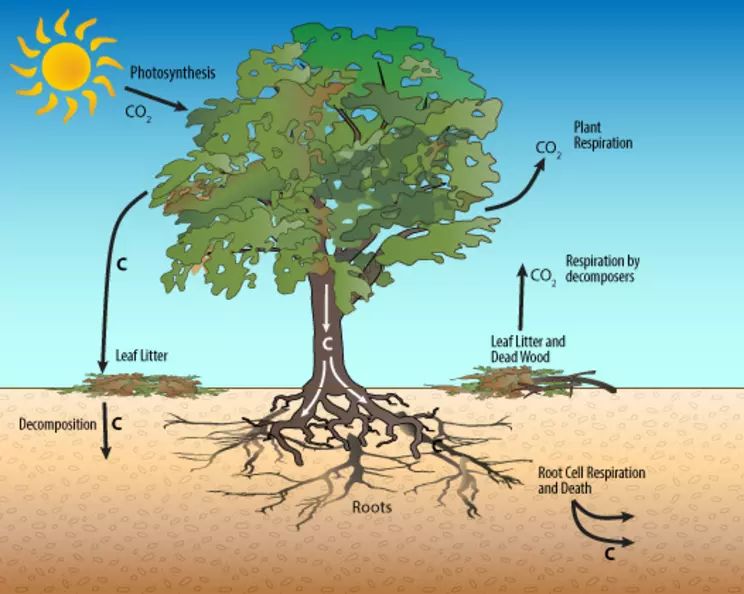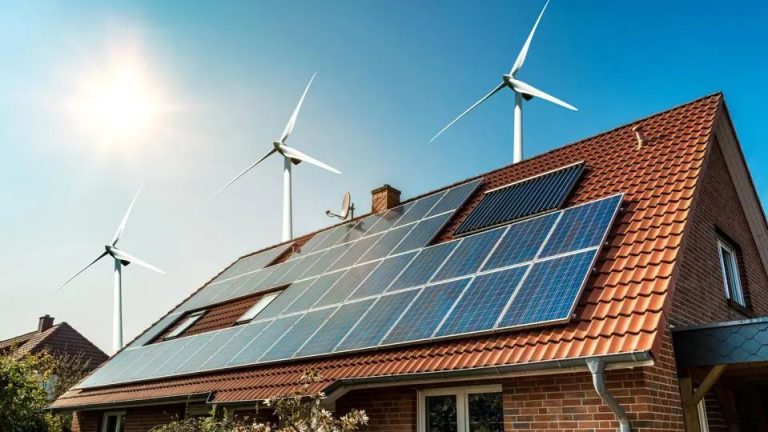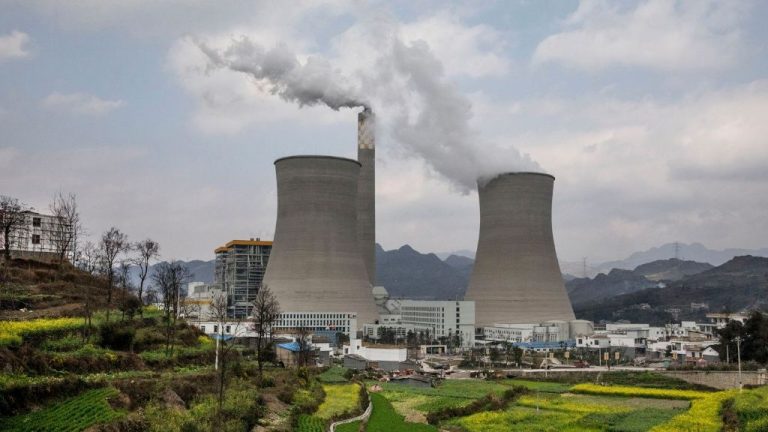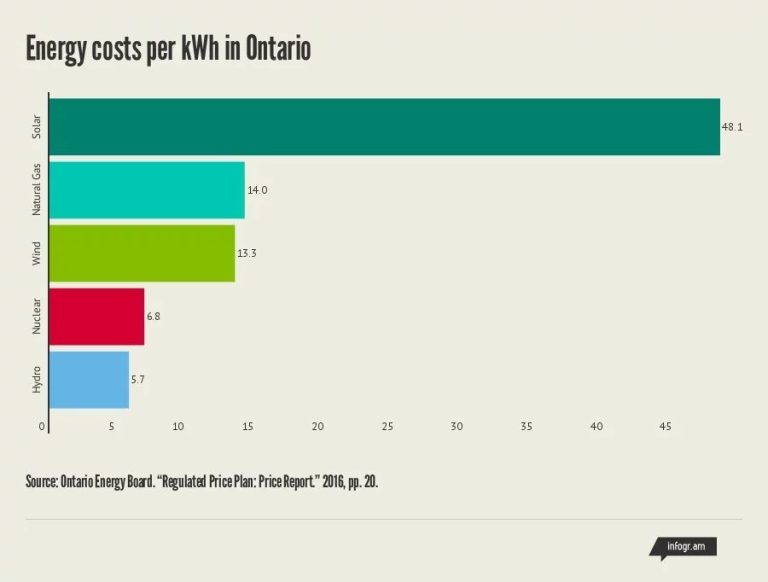How Are Plants Used In The Carbon Cycle?
The carbon cycle is the process through which carbon atoms cycle through the Earth’s ecosystems, atmosphere, oceans, and geosphere. Plants play a crucial role in the carbon cycle through the process of photosynthesis, whereby they absorb carbon dioxide from the atmosphere and convert it into organic carbon compounds. This introduction of carbon into the biosphere makes plants a carbon “sink.” Plants also return carbon to the atmosphere through the processes of respiration and decomposition. Overall, plants help regulate the Earth’s climate by removing carbon dioxide from the air and storing carbon in their tissues. They also provide the base of most food chains, passing carbon up the food chain to heterotrophic organisms. This overview will explore the key functions plants serve in absorbing, storing, and releasing carbon as it circulates through the biosphere.
Photosynthesis
Photosynthesis is the process by which plants use sunlight, water, and carbon dioxide to create energy and growth. During photosynthesis, plants take in carbon dioxide (CO2) from the atmosphere through small pores in their leaves called stomata. The CO2 molecules combine with water and are converted into glucose (sugar) by chloroplasts in the plant cells, releasing oxygen as a byproduct.
The chemical equation for photosynthesis is:
6CO2 + 6H2O + Sunlight → C6H12O6 + 6O2
This equation shows that six molecules of CO2 combine with six molecules of water in the presence of sunlight to produce one glucose molecule and six molecules of oxygen. The glucose provides plants with the energy and carbon they need for growth and maintenance.
Through photosynthesis, plants act as a sink for atmospheric CO2, absorbing it and converting it into plant matter. They help regulate Earth’s carbon cycle by removing CO2 from the air.
Carbon Storage
Plants play a vital role in storing carbon from the atmosphere through the process of photosynthesis. As plants grow, they absorb carbon dioxide from the air and use it to build new leaves, stems, roots and other tissues. This carbon becomes incorporated into molecules like cellulose and lignin that make up the plant’s biomass.

Trees and other woody plants are especially effective at storing large amounts of carbon, as they continue to add woody biomass year after year. The older and larger a tree gets, the more carbon it stores. Studies show that trees can store hundreds to thousands of pounds of carbon over their lifetimes.
Plants store carbon not just in their above-ground tissues, but below ground as well. Up to 30% of the carbon stored by forests can be found below ground in the roots and soil. Root systems can extend deep into the soil, binding carbon compounds from decomposing organic matter.
When plants die, some of their carbon is released back into the atmosphere through decomposition. But a significant portion also remains locked in the dead biomass and soil organic matter. In this way, forests act as carbon reservoirs, where carbon is continuously cycled between plants, soil and the atmosphere over long timescales.
Respiration
Plants, like all living organisms, undergo respiration to release energy from the food they produce. Respiration is the opposite process of photosynthesis, as plants take in oxygen and release carbon dioxide. This occurs both day and night. During the day, plants undergo photosynthesis and respiration simultaneously, but photosynthesis outpaces respiration so there is a net absorption of carbon dioxide. At night, however, when photosynthesis stops, respiration still continues, so plants release carbon dioxide back into the atmosphere.
The process of respiration in plants involvesbreaking down the sugars produced during photosynthesis. The sugar (glucose) is combined with oxygen, which breaks down the glucose and releases energy, water, and carbon dioxide. The CO2 released through plant respiration is then available for reuse and absorption during photosynthesis.
Plant respiration is a critical component of the carbon cycle and allows plants to reuse carbon atoms endlessly as they alternate between photosynthesis (carbon fixation) and respiration (carbon release). The balance between these two processes determines whether the plant is a net carbon sink or carbon source at any given time.
Decomposition
When plants die, the organic material undergoes decomposition by bacteria, fungi, and other organisms. This process breaks down the complex organic molecules like cellulose and lignins into simpler inorganic molecules and releases carbon dioxide gas back into the atmosphere.
Decomposition happens in stages. First the easily digestible sugars and starches are consumed. Then fungi and bacteria secrete enzymes to break down cellulose and lignins. This releases nutrients like nitrogen and phosphorus for reuse by other plants. Finally, the remaining tough woody material decomposes slowly over years and decades.
The rate of decomposition depends on environmental factors like moisture, temperature, and oxygen availability. In wet, warm, aerobic environments with abundant decomposers, decomposition happens rapidly. In cold or dry conditions with limited oxygen, decomposition can take much longer.
Ultimately most of the carbon stored in dead plant biomass gets converted back into carbon dioxide through decomposition and respiration by decomposer organisms. This returns carbon to the atmosphere that plants previously removed through photosynthesis. Decomposition is an essential stage in the continual cycling of carbon between plants, soils, organisms, and the air.
Soil Carbon
Plants play a major role in building soil carbon. As plants grow, they absorb carbon dioxide from the atmosphere through photosynthesis. Some of this absorbed carbon gets transported to the plant’s roots and deposited into the surrounding soil in a process called rhizodeposition. The roots themselves also contribute carbon to the soil as they grow, die, and decompose.
In addition, leaf litter and other plant residues that fall to the ground are broken down by microorganisms and fungi, releasing carbon compounds into the soil. The stable carbon left behind after this decomposition process is called soil organic matter. Soil organic matter is a key component of soil carbon.
The carbon stored in soil organic matter can remain bound in the soil for many years. Soils with high organic matter content also have increased fertility and water retention, benefiting plant growth. This allows plants to continue pulling carbon dioxide from the air and depositing carbon into the soil, further building soil carbon stocks.
Therefore, the growth of plants is crucial for accumulating and maintaining carbon stores in soil. Estimates show soils contain over 2,500 gigatons of organic carbon, more than three times the amount stored in the atmosphere. Supporting plant growth is important for keeping carbon locked away in soils.
Ocean Carbon Sink
The ocean plays a crucial role as a carbon sink, absorbing and storing carbon dioxide from the atmosphere. This is influenced significantly by marine plants and phytoplankton.
Phytoplankton are microscopic, photosynthesizing organisms that live near the ocean’s surface. Through photosynthesis, phytoplankton take in carbon dioxide and release oxygen. When the phytoplankton die, some of their biomass sinks into the deep ocean, carrying carbon with them.
Ocean plants like seagrasses, macroalgae, and mangroves also act as carbon sinks. Like land plants, they take in carbon dioxide for photosynthesis. But a portion of the carbon they accumulate gets buried in sediments when the plants die, where it can stay stored for thousands of years.
Studies estimate that the ocean absorbs up to 30% of the carbon dioxide emitted through human activities. This natural carbon sink capacity helps reduce the climate impact of CO2 emissions. However, climate change is affecting the ocean’s chemistry, threatening the ability of marine plants to continue acting as efficient carbon sinks.
Fossil Fuels
Fossil fuels like coal, oil and natural gas were formed from the buried remains of plants and animals that lived hundreds of millions of years ago. Over long periods of time, the intense heat and pressure below the Earth’s surface transformed the organic matter into fossil fuels.
Most fossil fuels originated from ancient plant matter in swamps and seas. As plants died, they sank to the bottom of the swamps and oceans where they were buried by sediments. With more and more material piling on top, the pressure and heat turned the organic matter into crude oil, natural gas and coal.
The burning of fossil fuels by human activities since the industrial revolution has released large amounts of carbon dioxide into the atmosphere. This has significantly increased the amount of carbon dioxide in the air and oceans, contributing to global warming and climate change.
Extracting and burning fossil fuels disturbs the long-term carbon storage in the geosphere. Within a few centuries, humans are reversing the slow process that took hundreds of millions of years to form fossil fuel reservoirs.
Deforestation
Deforestation has a major impact on the carbon cycle and can significantly increase the amount of carbon dioxide in the atmosphere. When forests are cleared, either by logging or burning, large amounts of carbon are released. Trees, especially tropical rainforests, are immense carbon reservoirs. They absorb and store carbon dioxide through photosynthesis and release oxygen back into the atmosphere.
When deforestation occurs, the carbon stored in the trees is released back into the atmosphere as carbon dioxide if the wood is burned or even if it decomposing on the forest floor. Deforestation accounting for 10-15% of total human-caused carbon dioxide emissions globally. With fewer trees, less carbon dioxide is removed from the atmosphere. The impact continues even after deforestation as the area loses its future carbon absorption capacity.
Replanting efforts can help reestablish carbon absorption levels over time. However, it can take decades or even centuries to attain the same carbon storage capacity with new forest growth. Preventing deforestation in old growth and mature forests is often viewed as one of the most effective climate change mitigation strategies. Overall, the large scale removal of forests through deforestation significantly increases carbon dioxide in the atmosphere and accelerates climate change.
Conclusion
In summary, plants play a critical role in regulating the carbon cycle and CO2 levels on Earth. Through the process of photosynthesis, plants absorb CO2 from the atmosphere and convert it into carbohydrates and oxygen. The carbohydrates are used to build plant tissues like stems, leaves, roots, flowers, fruits and seeds. When plants die, the stored carbon is released back into the environment through decomposition and respiration. Plants also regulate atmospheric CO2 by storing large amounts of carbon in their tissues. Forests, in particular, act as major carbon sinks, sequestering CO2 from the air. Deforestation and burning of fossil fuels releases this stored carbon back into the atmosphere. The oceans also act as a major carbon sink, absorbing CO2 through phytoplankton photosynthesis. However, ocean acidification from excess atmospheric CO2 threatens marine ecosystems. Going forward, protecting forests and planting more trees will be vital to counteract rising CO2 levels and mitigate climate change through natural carbon sequestration.





